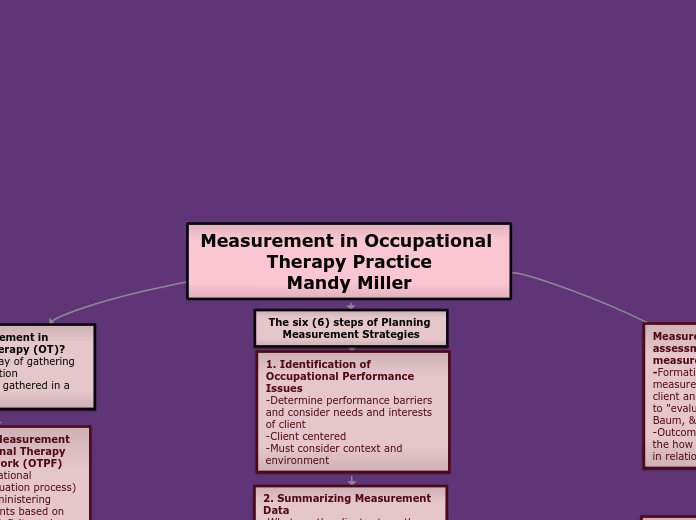arabera Mandy Miller 6 years ago
989
Measurement in Occupational Therapy Practice Mandy Miller

arabera Mandy Miller 6 years ago
989

Honelako gehiago
3. Developing Priorities -Client centered with clinical input to determine most important goals and needs
4. Designing Intervention Plans -Collaborative process involving creativity, clinical reasoning, and strategies needed to meet goals of the client
5. Implementing Intervention Plans -Execute plan while continually measuring progress towards goals
6. Planning Ongoing Measurement Strategies -"Generating evidence for practice decisions" by continually measuring progress (Law, Baum, & Dunn, 2017)